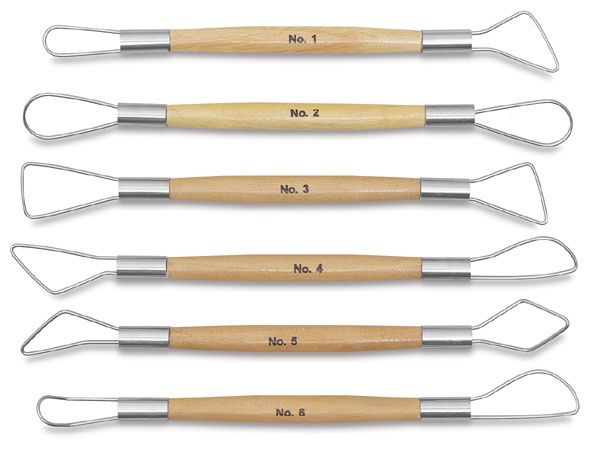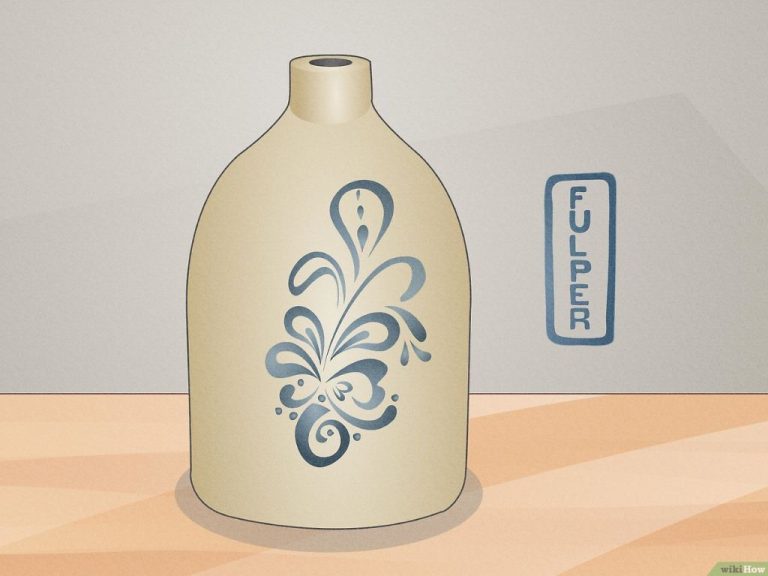What Does Bat Grip Tape Do?
What Is Bat Grip Tape?
Bat grip tape is a type of grip can be applied to the handle or bottom grip part of a baseball, fastpitch softball, or BBCOR bat. According to Lizard Skins, bat grip tape is a way to improve the grip on a baseball or softball bat. It is designed to provide more friction and tackiness on the bat handle to help prevent slipping.
Bat grip tape is usually made of durable synthetic materials like vinyl and polymer plastics. These materials provide good shock absorption and anti-slip friction. Brands like Lizard Skins and VukGripz use proprietary polymer compounds with extra tackiness and vibration damping qualities. Some grip tapes also use mesh fabrics or cushioned foam padding for enhanced comfort. The materials make it easy to grip the bat firmly with less hand fatigue.
The grip tape is applied to the handle area of a wooden or aluminum bat just below the knob. Players can choose to cover a few inches of the bottom handle or wrap up to around 8 inches up the grip starting from the taper. The extra grip surface allows better control, more power behind swings, and reduced bat slippage at the moment of impact with the ball.
Purpose of Using Bat Grip Tape
The main purpose of using bat grip tape is to improve grip and control when holding the bat. The material used in grip tape creates more friction against the hands, helping to prevent the bat from slipping, especially during swings. This gives hitters better control and command over their swings.
Grip tape also helps absorb sweat and moisture from the hands. The perforated surface traps moisture and provides ventilation to reduce slippage. This is useful on hot, humid days when hands tend to sweat more. The tape helps maintain a firm grip regardless of the amount of perspiration.
According to Lizard Skins, “Bat grips are a great way to improve your grip on the bat and they help to make it more comfortable, but are they really necessary?” While not absolutely required, most experts recommend using grip tape to optimize swing mechanics and bat control.
Types of Bat Grip Tape
There are several types of bat grip tape designed for different needs and preferences:
Synthetic Rubber Tapes
Synthetic rubber tapes like Lizard Skins are very popular. They provide a tacky, cushioned grip that absorbs vibration and sweat. The soft, compliant rubber conforms to the shape of the hand. Many players like the feel and comfort of these rubber grips. They come in a variety of colors and designs.
Cord and Fabric Tapes
Cord and fabric grip tapes like Vuk Bat Grips use materials like cotton cord, nylon, and polyester. They provide a mix of cushioning and tackiness. The cords absorb sweat and give a secure grip. The fabric backing adheres to the bat. These combine some of the benefits of rubber and stick-on sandpaper grips.
Stick-On Sandpaper Tapes
Stick-on sandpaper grip tapes contain an adhesive backing with a rough, gritty texture on the outer surface. The abrasive grip creates friction to prevent slipping. These affordable grips provide good tackiness, especially in dry conditions. However, they lack the shock absorption of rubber and cord grips. The grit can also wear down over time.
Pros of Using Bat Grip Tape
Using bat grip tape provides several advantages for hitters (source). The main benefits include:
Better Bat Control: The texture of grip tape allows hitters to grip the bat better, providing more control and confidence when swinging. Grip tape reduces hand slippage on the bat handle, allowing for a more secure and consistent grip.

Reduces Vibration: Grip tape can help dampen vibrations from bat contact with the ball, reducing sting in the hands. This makes it more comfortable to grip the bat tightly through the entire swing.
Provides Tactile Grip: The texture of grip tape is designed to stick to the batter’s gloves and hands. This tactile grip creates friction to prevent the batter’s hands from slipping on the bat handle, even in wet conditions.
Easy to Apply and Remove: Most bat grip tapes come with an adhesive backing for quick and easy application to any bat handle. The tapes can also be removed cleanly when desired without leaving residue behind.
Cons of Using Bat Grip Tape
While bat grip tape can provide many benefits, there are some potential drawbacks to consider as well. One downside is that grip tape can wear out over time and need replacement. Depending on the amount of use and the type of grip tape, it may only last part of a season before needing to be reapplied (source). Reapplying grip tape can become tedious and add to the costs of maintaining your bat.
Some types of grip tape, especially poorer quality tape, can also leave behind a sticky residue on the bat handle when removed (source). This sticky residue can make reapplying new grip tape more difficult. Properly removing old grip tape and cleaning the bat handle is important to avoid this.
Finally, grip tape adds a small amount of weight to a bat. While minimal, some players who prefer very lightweight bats may notice the difference in weight (source). However, this drawback is relatively minor for most players.
How to Apply Bat Grip Tape
Applying bat grip tape properly is important for getting the full benefits of improved grip and swing. Here are the key steps for applying bat grip tape:
First, make sure the surface of the bat is clean and free of dirt, oil or existing tape residue. Use a bat cleaning wipe or rubbing alcohol to thoroughly clean the bat barrel and handle.
Next, peel off the backing of the bat grip tape slowly as you wrap it around the bat. Go slowly and apply firm pressure to avoid air bubbles under the tape. According to this guide from Lizard Skins, you’ll want to peel the backing gradually as you wrap.
Wrap the bat grip tape firmly around the bat, but avoid pulling it too tight. Use a razor or scissors to trim off any excess tape at the ends. Running your fingernail along the edge can help seal the tape.
Taking the time to properly clean and wrap the bat grip tape ensures maximum grip, comfort and swing control when at bat.
Maintenance Tips
Properly maintaining your bat grip tape is important for performance and safety. Grip tape can wear down over time and lose its tackiness. Inspect your bat’s grip tape regularly, especially if you use it frequently. Look for areas where the grip is peeling, worn down, or slick. As a rule of thumb, grip tape should be replaced every 1-2 seasons or as needed (source).
When it’s time to replace old grip tape, make sure to fully remove any remaining adhesive residue so the new tape adheres properly. Chemical solvents like WD-40, kerosene, or turpentine can help dissolve old adhesive (source). Thoroughly clean the bat’s handle before applying fresh tape. Following proper maintenance routines for your bat’s grip will help optimize performance and extend its usable lifespan.
Alternative Options
While bat grip tape provides many benefits, there are some alternative options that players can consider:
Batting Gloves
Wearing batting gloves can help improve grip on the bat handle without adding anything directly to the bat itself. The material on batting gloves is designed to be tacky and prevent slipping. Many players opt to use batting gloves in conjunction with bat tape for maximum grip.
Pine Tar
Applying a small amount of pine tar to the bat handle is another option to help improve grip. Pine tar has very tacky properties that cause the bat to stick better to a player’s gloves. However, too much pine tar can be messy and lead to the bat handle feeling sticky. Pine tar may not last as long as engineered grip tapes.
Choke Up on the Bat
Players can also try gripping the bat further up the handle rather than at the very bottom of the knob. This allows your bottom hand to wrap more fully around the bat and can provide more leverage. Choking up can help batting control and contact. However, it does reduce bat length and power potential.
Key Takeaways
Using bat grip tape provides several key benefits for baseball and softball players. Here are some of the main takeaways on what bat grip tape does:
Improves Grip and Control – The main purpose of bat grip tape is to help give players a better, more controlled grip on the bat handle. The tacky surface prevents the bat from slipping in your hands during swings.
Types Include Rubber, Fabric, Sandpaper – There are a few main types of grip tape such as rubber, fabric, and sandpaper. Each provides friction but have slightly different feels and textures.
Easy DIY Application – Applying grip tape is a simple process you can do yourself by just peeling and sticking it onto a clean bat handle. It’s an easy upgrade you can make.
Needs Occasional Replacement – While grip tape is durable, it does wear down over time and use. You’ll need to replace it occasionally as it loses its stickiness and friction.
Conclusion
When choosing and applying bat grip tape, focus on finding the right balance of tackiness, thickness, and coverage for your specific needs. Testing out a few different tapes can help dial in the optimal grip. Place the tape strategically, focusing on areas where you tend to lose control of the bat during swings. Take proper care of the tape through occasional cleaning and replacement as needed. With the right grip tape in place, you’ll enjoy better control, more confidence at the plate, and reduced bat slippage on big swings. Overall, bat grip tape is an inexpensive and customizable way to enhance your batting performance.
The key benefits of using bat grip tape include improved grip and swing control, reduced sting and vibration, and protection for your bat’s handle. Grip tape helps keep the bat from slipping out of your hands on hard swings. It provides cushioning to absorb shock and impact. Tape also shields the bat’s handle from premature wear. With the right grip tape set-up, you can swing with confidence knowing the bat will stay firmly in your hands throughout the motion.



